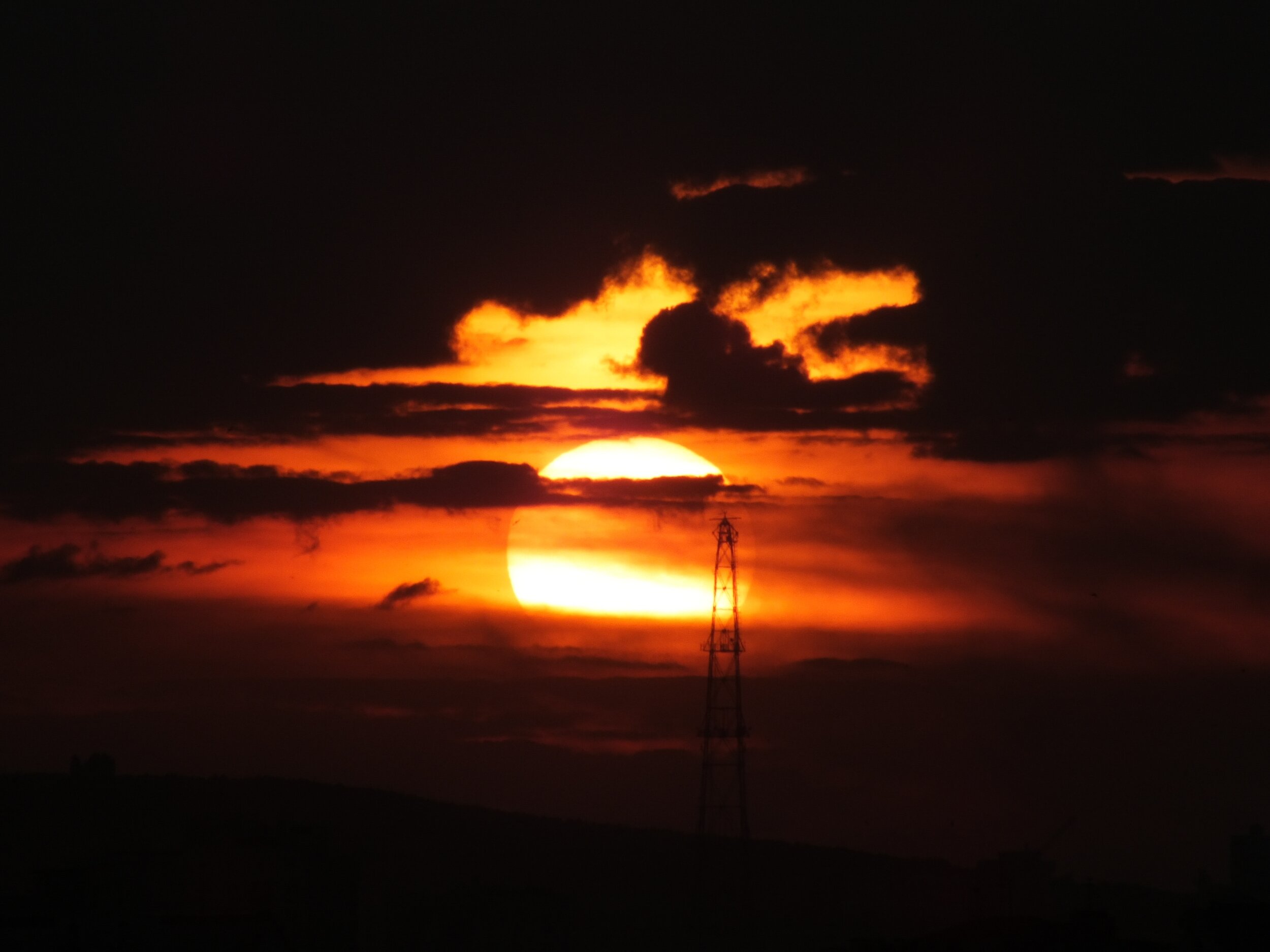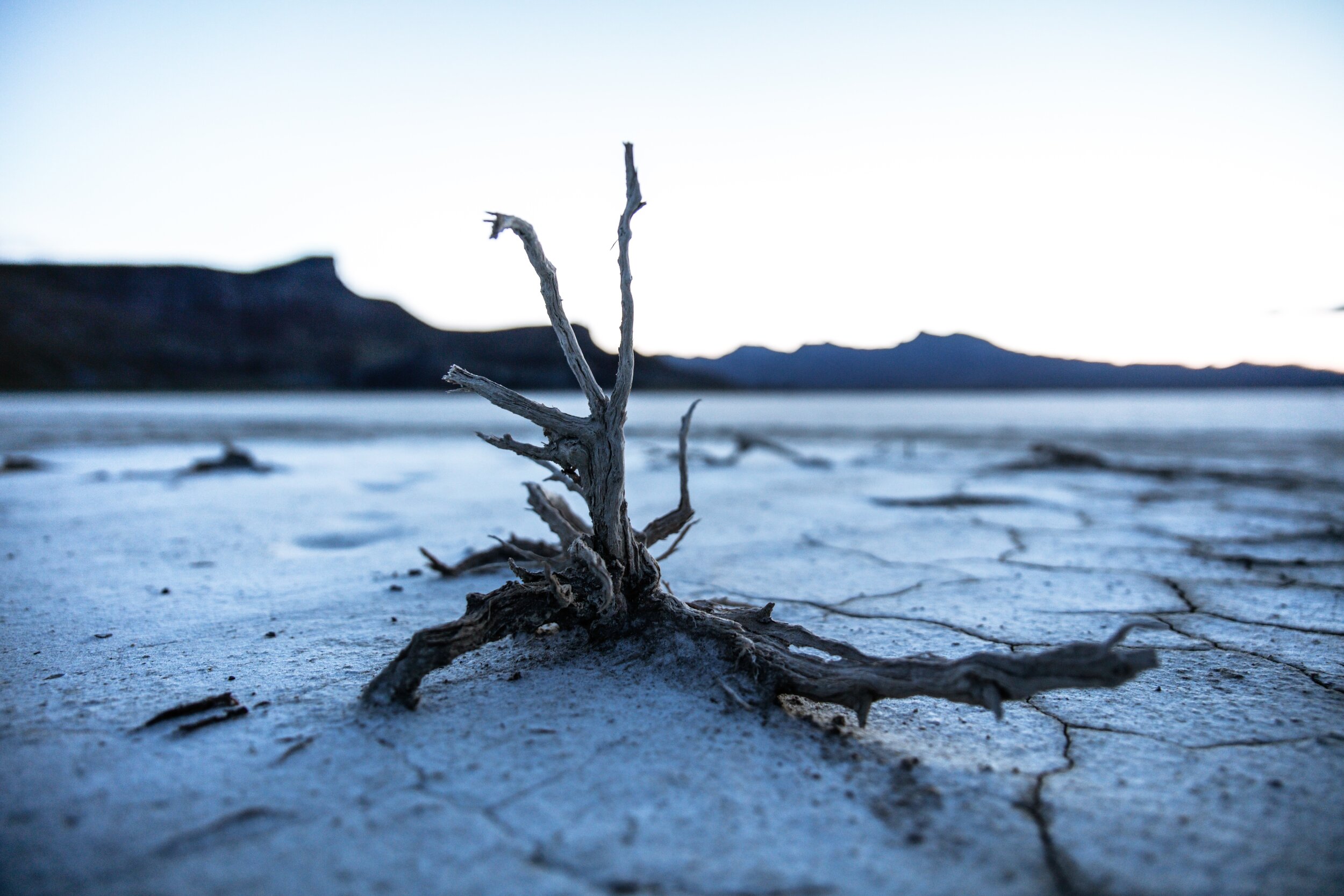Runaway
In H.G.Wells’ ‘The Time Machine’, the traveler journeys ever onwards into the far distant future of Earth as it entered its end of days. Standing on a remote beach he witnessed the last living creatures eek out an existence on a dying Earth. Lichens and a creature adorned with tentacles were the only apparent relics of the flora and fauna of our world. He watched them whilst snow fell and ice crusted the shoreline, all beneath a sky turned dark red by a bloated Red Giant sun.
This portrayal of the ‘End of the World’ is evocative and seemingly far enough in the future to be no more than a chilling story to tell your children at night.
Or is it?
You can’t read or listen to the news these days without being inundated by warnings of climate change and the legion impacts upon the way we live our lives; but is that the whole story?
One could be forgiven for feeling that our ability to grow tropical fruits in Sicily, or how growing potatoes in Scotland may become impossible – or even how drinking water will become scarce, are simply the end points in a process. It implies that we may have to put up with warmer summers, and more wet and windy winters, but that this is a move from one reality to a new reality; like the flick of a switch we go from ‘normal’ to a new climate which would then become the new ‘normal’.
I know this is a bit facetious but the picture I sometimes get is one where a few degrees change leads to melting glaciers, higher sea levels, and mangoes in the med. A concept that seems to have disappeared from our common discourse is “runaway greenhouse effect”. Is public awareness of the “runaway effect” lost? This isn’t one that produces a few degrees of change and then plateaus; it's a runaway bus on a steep hill and ends with a cataclysmic crash at the bottom. Oblivion - not pineapples in Picardy.
So, how real a threat is the “runaway greenhouse effect”, and where is the point of no return for that temperature change?
The foundation of the theory of the greenhouse effect first appeared in 1927 by the meteorologist Sir George Simpson who, in 1928, described the concept that there was a limit to the amount of heat a body (planet) could lose through radiation. He published his work in an article entitled “On Some Studies in Terrestrial Radiation” Vol. 2, No. 16. Published March 1928 for the Royal Meteorological Society.
This concept was built on by two independent researchers during the 1960s.
The first was by Makoto Komabayashi from Nagoya University who wrote the rather lengthy entitled article "Discrete equilibrium temperatures of a hypothetical planet with the atmosphere and the hydrosphere of one component-two phase system under constant solar radiation" for the Journal of the Meteorological Society of Japan (JMSJ), vol 45: 137–138 in 1967.
The second was Andrew Ingersoll, now Professor of Planetary Science at Caltech, who has been a leader in the investigation of planetary weather and climate for nearly five decades. In 1969 he used the principle to describe the mechanism thought to have led to Venus’ harsh environment in an article "The Runaway Greenhouse: A History of Water on Venus", published in the Journal of Atmospheric Sciences, vol. 26, Issue 6, pp.1191-1198.
Their work looked at how much energy a planet absorbs compared to how much it radiates, describing how atmospheres with greenhouses gases, including simple water, have a limit as to how much they can radiate back into space as temperatures rise.
Thus, if the energy the planet receives from the sun is greater than the energy it can radiate then the temperature goes up, and up, and up – and the “runaway” starts.
This maximum level has now become known as the ‘Komabayashi-Ingersoll Limit’.
(For those interested in reading about this further I would suggest reading the Wikipedia article which is very informative. To access, click here)
So let’s focus on the insulating factors; the greenhouse ‘gases’. Firstly taking note that water acts as a greenhouse gas as well and, as temperatures rise, it drives evaporation and increases water content higher in the atmosphere.
The situation is then exacerbated by Carbon Dioxide (CO2). We are all familiar with the focus on this greenhouse gas but the view, until recently, has been that CO2 on its own is unlikely to get us past the threshold into the “runaway” scenario. However there may be some rethinking to be done here as some authors (be careful of the reliability of the sources at the moment!) are suggesting it may be worse than we thought.
Sadly this is not the end of the story. We have increasing water content acting as a greenhouse gas, to which we add CO2, but there is the bonus ball (or bull) of cow farts adding methane that, whilst shorter lived in the atmosphere, is a lot more potent than CO2.
Then we need to consider nitrous oxide which can come from a range of natural sources from the soil itself and the oceans, but also from human sources such as agricultural fertilizers, manure, biomass, fossil and bio-fuels.
Are we yet close to the prize-winning multiplier that pushes us above the ‘Komabayashi-Ingersoll Limit’?
I suspect not, but there is a monster under the bed; well, under places like Siberia for example. Like ‘The Thing’ from the 1950s Science Fiction film that emerges from its Arctic tomb - this ‘monster’ is defrosting too.
Teams of people now comb the Siberian tundra looking for the remains of mammoths, another megafauna that could not adapt to different climates, whilst, beneath their feet, frozen deposits of methane clathrate are starting to defrost.
Estimates of the potential size of these natural reservoirs of methane are decreasing but there are still huge uncertainties and, as global temperatures rise removing the chilling ice and permafrost, those deposits become more exposed.
It is here where the real threat may lie.
Dormant for periods measured on geologic timescales this gaseous monster could escape and with a single belch, push us dangerously close to or beyond the ‘Komabayashi-Ingersoll Limit’ and into the ‘runaway’ scenario.
There is even precedent from history!
It has been suggested that the “Great Dying”, otherwise referred to as the Permian Extinction Event (Benton & Twitchet, 2003), was one such event where an explosion of greenhouse gasses (methane) lead to the majority of life on Earth being extinguished (96% of marine, and 70% of land based life).
Also the Paleocene–Eocene Thermal Maximum (PETM) event has been suggested as another example.
Perhaps these locked up reserves of methane are climate time-bombs which defrost in unpredictable massive bursts. Indeed, they even have a name for it: The ‘Clathrate Gun Hypothesis’.
One day we are picking mangoes in Nice and the next three quarters of life on Earth are wiped out; what 24 hours could bring!
Are you cold tonight? Don’t put the fire on, wear a jumper; the ‘Thing’ is closer than you think.
Caesium-135
Odd musings, strange ideas, and random thoughts
References
Benton, M. J., Twitchett. R. J., 2003. How to kill (almost) all life: the end-Permian extinction event. Trends and Ecology in Evolution [online]. 18(7), 358-365. (Viewed 10 October 2019). Available from: https://doi.org/10.1016/S0169-5347(03)00093-4.
G. C. Simpson, C.B., F.R.S., 1929. G. C. SIMPSON, C.B., F.R.S., ON SOME STUDIES IN TERRESTRIAL RADIATION Vol. 2, No. 16. Published March 1928. Quarterly Journal of The Royal Meteorological Society [online]. 55(229), 73. (Viewed 10 October 2019). Available from: https://doi.org/10.1002/qj.49705522908.
Komabayasi. M., 1967. Discrete Equilibrium Temperatures of a Hypothetical Planet with the Atmosphere and the Hydrosphere of One Component-Two Phase System under Constant Solar Radiation. Journal of the Meteorological Society of Japan. Ser. II [online]. 45(1), 137-139. (Viewed 10 October 2019). Available from: https://doi.org/10.2151/jmsj1965.45.1_137.
To explore any other facts or comments discussed in this article, visit: https://en.wikipedia.org/wiki/Runaway_greenhouse_effect.
By anonymous featured writer, Caesium-135. See ‘Team’ for more information and contact details.





